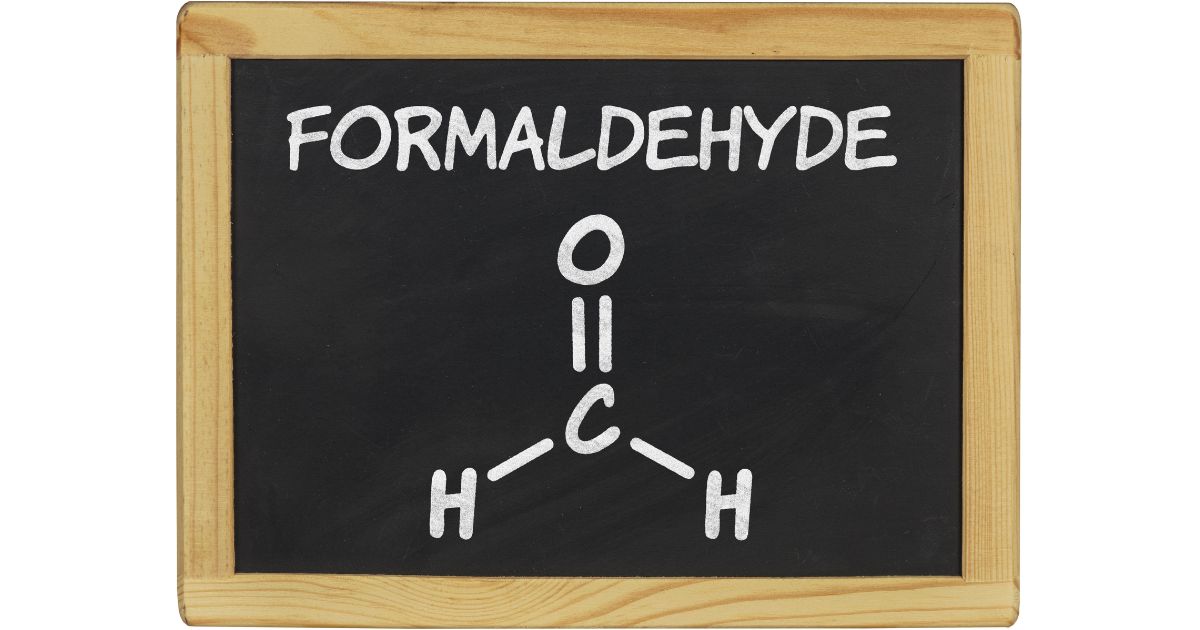What is formaldehyde? Formaldehyde often gets a bad reputation as a “toxic” or “dangerous” chemical, particularly in conversations about embalming. However, much of the fear surrounding this substance stems from a lack of understanding.
But the truth is, formaldehyde is a naturally occurring compound present in both our bodies and the environment.
When used correctly and in professionally regulated settings, such as mortuaries, formaldehyde is a safe, effective, and essential substance.
This article examines the facts about formaldehyde, dispels common misconceptions, and explains why it’s a crucial component of the embalming process, particularly for international repatriation. By the end, you’ll have a clearer view of formaldehyde’s proper role, not just in death care, but in everyday life.
Why talk about formaldehyde?
In recent years, conversations around chemicals in our daily lives have become more common and often more emotional.
Increased public awareness around health and chemicals in our daily lives has led to more questions about what’s safe and what isn’t. While this is generally a positive trend, it can also lead to the spread of misinformation. Especially when it comes to technical terms like “formaldehyde.”
Some sources incorrectly suggest that any exposure to formaldehyde is inherently dangerous, without providing context or explanation. In the context of repatriation and mortuary care, families may encounter formaldehyde for the first time when discussing embalming. This can raise questions about being embalmed, particularly around safety, health, and environmental impact.
That’s why it’s so important to have a fact-based, respectful conversation about what formaldehyde is and how it’s used.
What is formaldehyde?
Formaldehyde, also called methyl aldehyde, is a basic chemical compound composed of carbon, hydrogen, and oxygen (CH₂O). It is a colourless gas at room temperature and has a strong, distinctive smell. Formaldehyde isn’t only lab-made; it occurs naturally in the environment and inside the human body, which produces small amounts during metabolism.

Formaldehyde is produced in large quantities for use in a variety of products, such as building materials, consumer goods, and household items. Its ability to kill bacteria and preserve organic matter makes it highly effective in medical and mortuary applications. Though the name might seem daunting, formaldehyde is among the most extensively researched and regulated chemicals worldwide.
Formaldehyde in embalming: Why it’s used
Embalming is the process of preserving a body after death. It helps delay natural decomposition, sanitises the body, and prepares it for viewing or transport. Formaldehyde is utilised in embalming fluid because of its strong preservative and antibacterial qualities.
During this process, embalming fluid, containing a small percentage of formaldehyde, is introduced into the circulatory system. This prevents bacterial growth and slows the natural breakdown of cells.
Effectiveness in slowing tissue breakdown
Formaldehyde’s effectiveness in slowing tissue breakdown is well-documented. Unlike refrigeration, which only slows decomposition, embalming offers longer-lasting preservation. Because of its preservation properties, formaldehyde is the most effective compound available for preventing tissue decomposition. This is important for cases such as:
-
Viewings
It is often chosen for cultural, religious, or personal reasons, particularly if there will be a viewing or open-casket funeral.
-
Funeral services
Delays can occur between death and funeral arrangements, especially when family members are travelling from interstate or overseas to attend a service.
-
Transporting a body
Transporting the body over long distances, or repatriation interstate, can take days. Embalming with formaldehyde ensures the body remains in a stable, hygienic state during this time. It helps preserve the dignity of the deceased and protects others from potential biohazards.
-
International repatriation
When a person passes away overseas, international repatriation typically involves long-distance travel, customs clearance, and adherence to strict health regulations. Most countries, including Australia, require embalming before remains can be transported internationally. Formaldehyde is the only agent that provides the level of preservation needed for safe, long-distance transport.
Is formaldehyde harmful to humans?
Much of the concern around formaldehyde stems from confusion about exposure. There’s a difference between formaldehyde being used in a process and people being directly exposed to unsafe levels of it.
Is formaldehyde a carcinogen?
Research by international bodies like the International Agency for Research on Cancer (IARC) classifies formaldehyde as a known or presumed human carcinogen (when inhaled).
- Some studies suggest that long-term workplace exposure to formaldehyde at significant concentrations may increase the risk of nasal sinus cancer.
- However, it’s not definitive, as other studies have found no increased risk.
In Australia, inhaled formaldehyde is classified as a potential carcinogen, meaning it may cause cancer if you are exposed to high levels over a long time.
However, Australian research and authorities, including the Department of Climate Change, Energy, the Environment and Water (DCCEEW), Safe Work Australia’s Australian Work Exposures
Study and SA Health, confirm this risk mainly applies to workers exposed to formaldehyde repeatedly in poorly controlled environments. For example:
- Long-term, high-level exposure in some workplaces has been linked to increased cancer cases, such as the manufacturing of pressed wood products.
- Formaldehyde is placed in Category 1B, primarily based on animal evidence and some human data suggesting carcinogenic potential.
- Typical low-level exposures from household products or the environment pose minimal risk.
Breaking down the misconception: Formaldehyde exposure
In truth, the key factor is formaldehyde exposure. The concentration, duration, and method of contact determine whether a substance poses a health risk.
Formaldehyde gas only becomes a health concern when people are exposed to high concentrations over extended periods, usually in unregulated or poorly ventilated workplaces.
-
Long-term exposure to high levels of formaldehyde
Formaldehyde is often viewed as a dangerous substance, but the real health risks associated with it arise from high-level exposure. These effects are typically seen in industrial workers where safety standards are not met:
- Formaldehyde gas may enter the body through inhalation in areas without adequate ventilation.
- Formaldehyde ingestion, or skin contact with formaldehyde solutions, can occur due to improper handling or unregulated use.
- Exposure to high concentrations can cause sensory irritation of the eyes, nose, and throat, and discomfort in the nasal cavity.
In daily life, formaldehyde exposure is minimal, and adverse health effects are unlikely unless there’s prolonged contact with unsafe levels.
-
Occupational exposure to formaldehyde
Formaldehyde use in Australia is governed by Safe Work Australia, which sets strict standards to limit formaldehyde exposure.
Workplace safety standards in Australia
The permissible exposure standards are 1 part per million (ppm) over an 8-hour workday, with a short-term exposure limit of 2 ppm.
In embalming, formaldehyde is used in a highly controlled setting by trained professionals. The public is not exposed to dangerous concentrations.
The trace amount of formaldehyde that remains in the body after embalming is well below harmful levels and poses no risk to people attending a funeral or viewing.

-
Everyday exposure to formaldehyde
You may be surprised to learn that formaldehyde is present in many everyday consumer products. Low concentrations can be found in pressed wood products, cosmetics, shampoos and hair products, nail polish, cigarette smoke, and even some foods.
In these cases, formaldehyde levels are very low and generally considered safe by health authorities. Most of us encounter formaldehyde throughout our lives without suffering any adverse effects.
Formaldehyde-containing products
- Composite wood products
- Plywood
- Furniture
- Textiles
- Cleaning agents
- Medicines
- Personal care products
- Cosmetic products
- Adhesives
- Solvents
- Disinfectant
Most of us are exposed to formaldehyde throughout our lives without experiencing any adverse health effects.
The body can process small amounts of formaldehyde, naturally breaking it down through its metabolic functions.
This provides a clearer context for the use of formaldehyde in embalming. It is just one of many ways this common compound is used in modern life.
Where formaldehyde is found
Formaldehyde is also present naturally in the environment. It’s released by plants, animals, and even humans as part of biological processes. You’ll also find it in bush fires, tobacco smoke, volcanic eruptions, the decay of organic matter, and certain fruits.
For example, apples, pears, and seafood contain naturally occurring formaldehyde in levels far higher than you’ll find in a mortuary.
Formaldehyde does not build up in the environment
Formaldehyde is a volatile organic compound (VOC), which means it doesn’t stay in the environment long. When released into the air, water, or soil, it breaks down quickly, usually within a few hours to a few days. This means formaldehyde doesn’t accumulate in the environment, making it a lower ecological risk compared to persistent chemicals like heavy metals or plastics.
Its temporary nature is one reason it’s considered safe for use in time-sensitive applications like embalming.
This puts the use of formaldehyde in embalming into perspective. It is just one of many ways this common compound is used in modern life.
Reframing the formaldehyde conversation
Formaldehyde has been extensively studied, tightly regulated, and used safely for over a century. It’s a naturally occurring, highly studied chemical with a wide range of beneficial uses, including embalming.
In mortuary care and international repatriation, formaldehyde supports legal requirements and ensures that families can say their goodbyes with peace of mind. By talking openly about its use and addressing common myths, we hope to support families in making informed, confident decisions.
If you have any further questions about embalming or international repatriation, get in touch with Bellrae today.
Have a question?
Our friendly team are hear to help. Reach out with any questions you may have and we'll be in touch to discuss.
